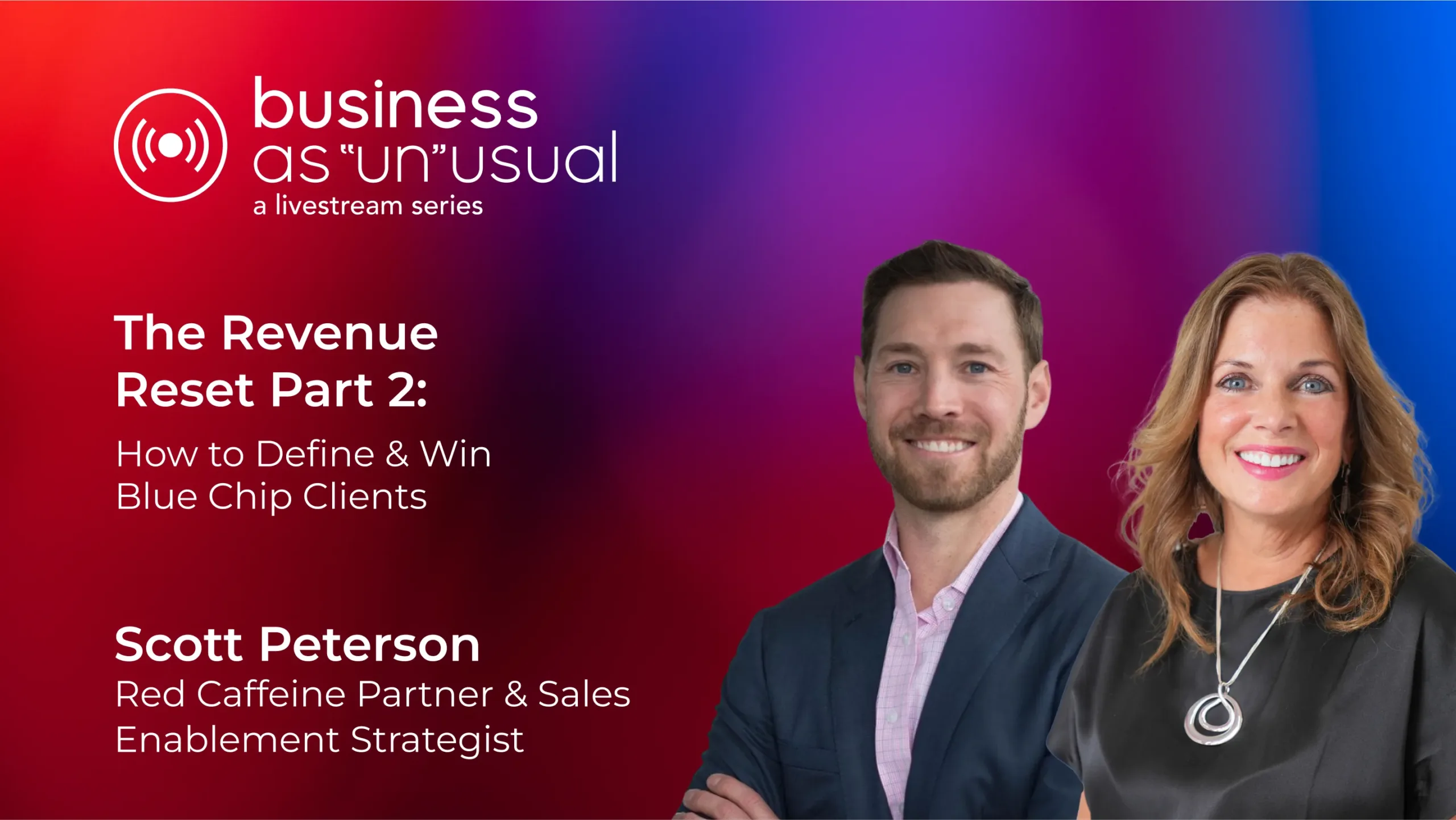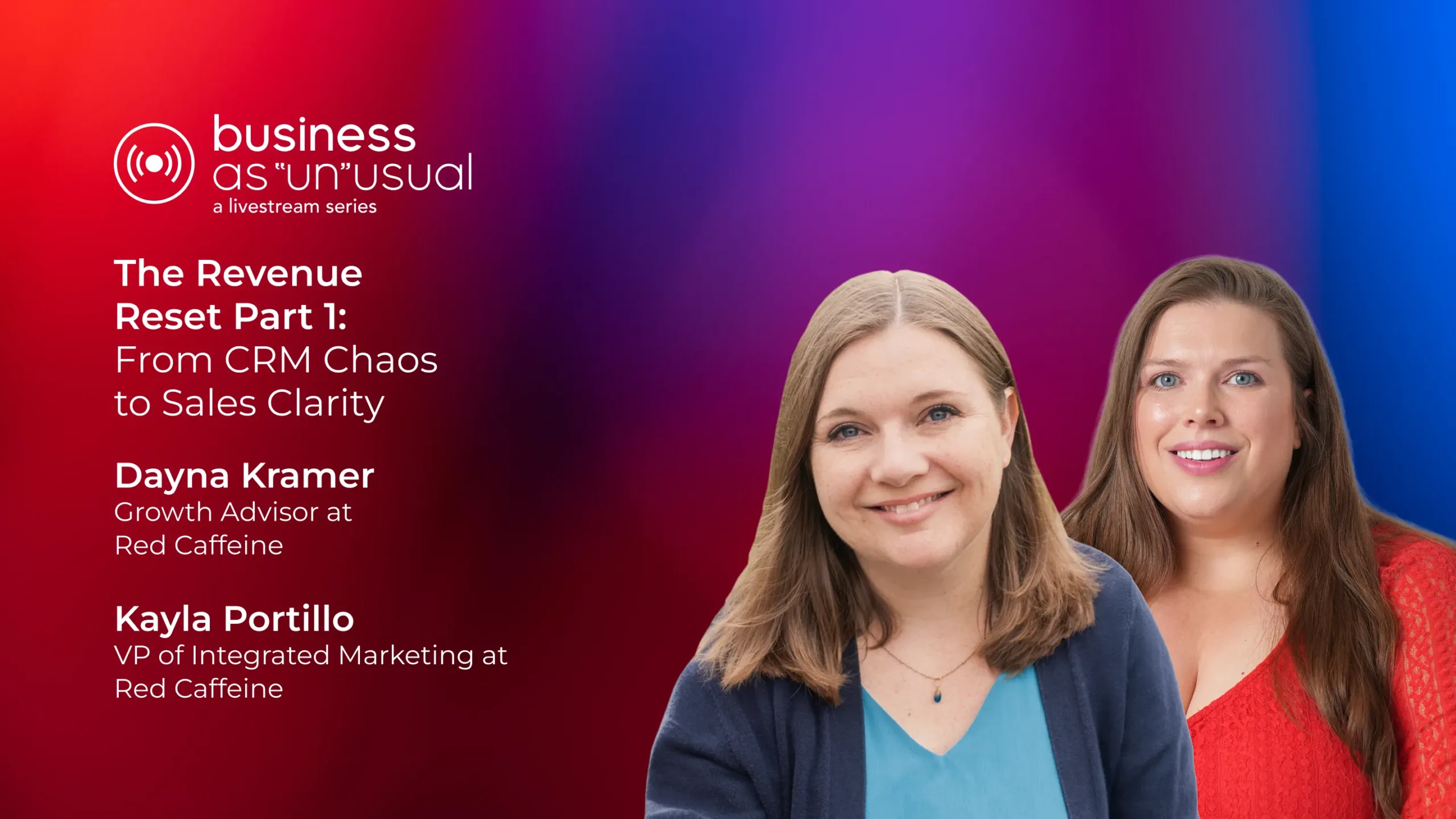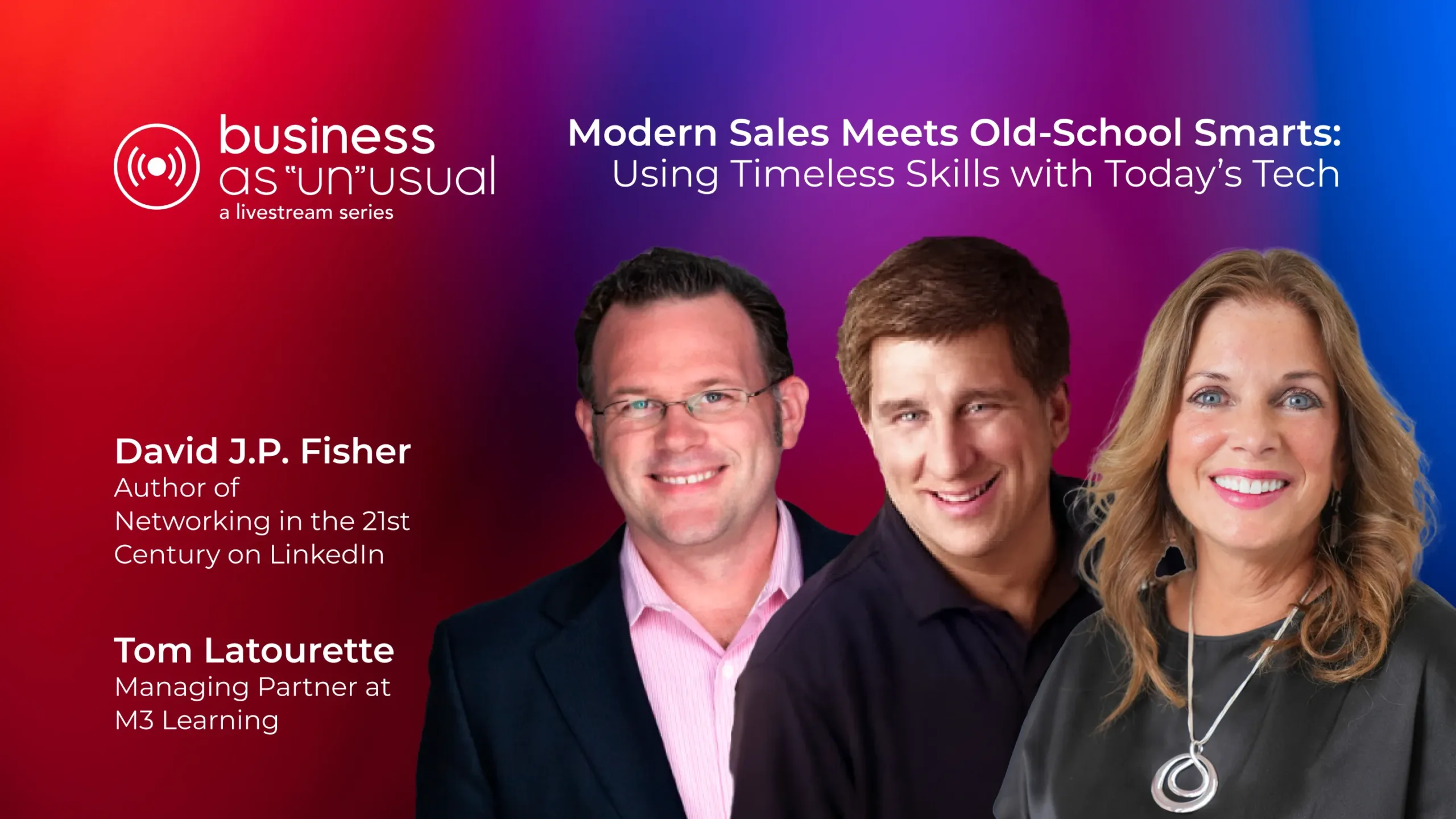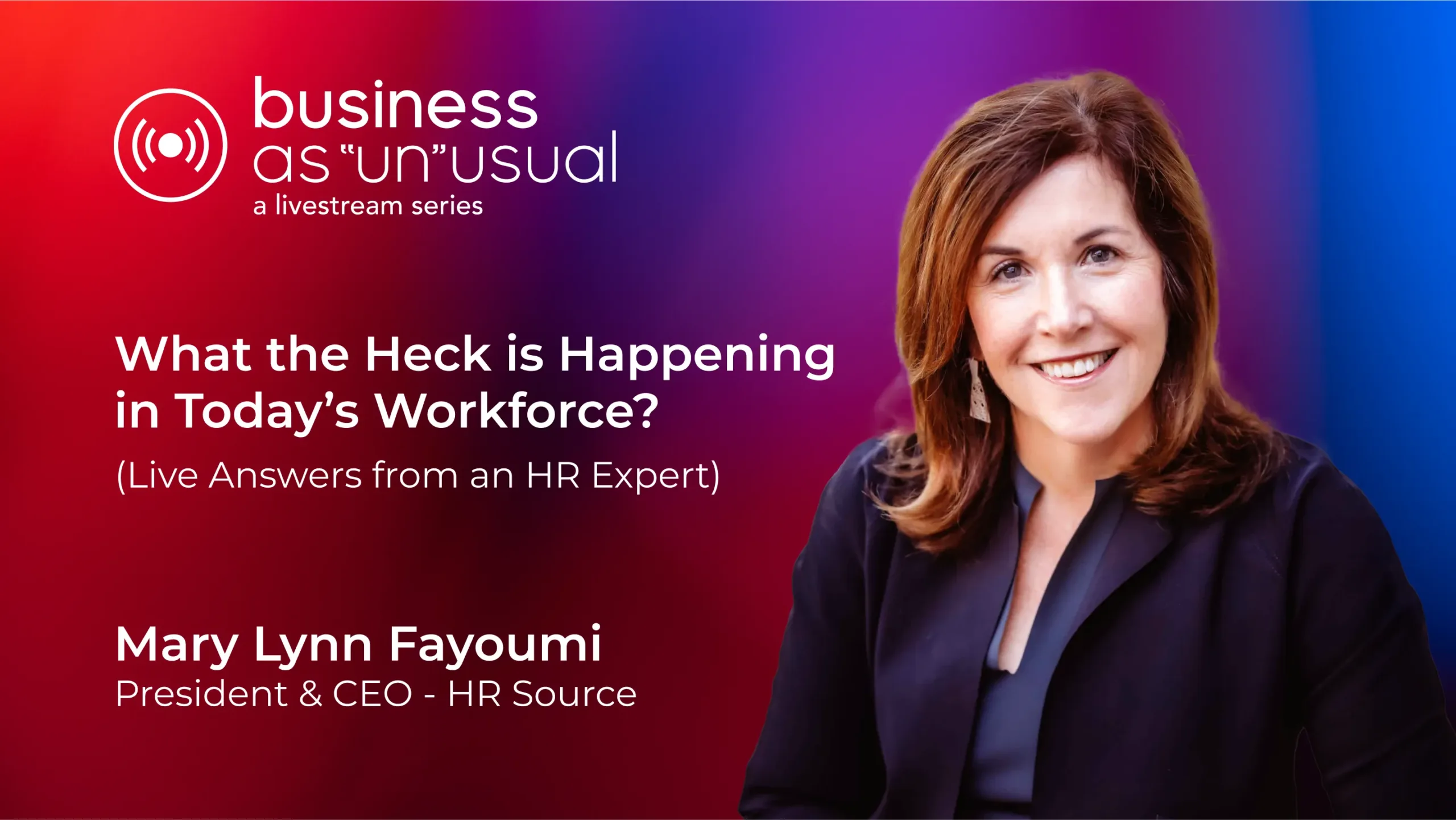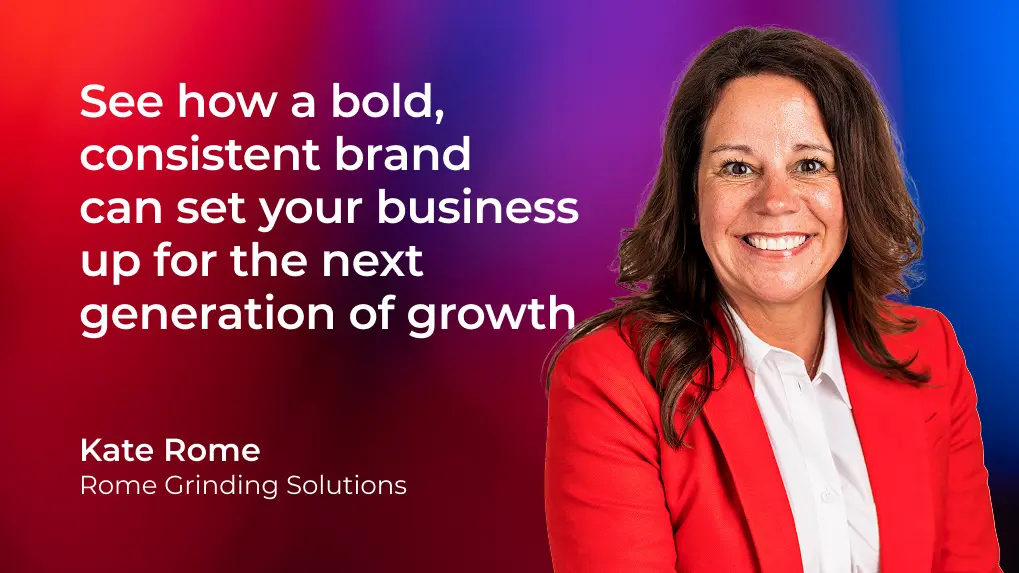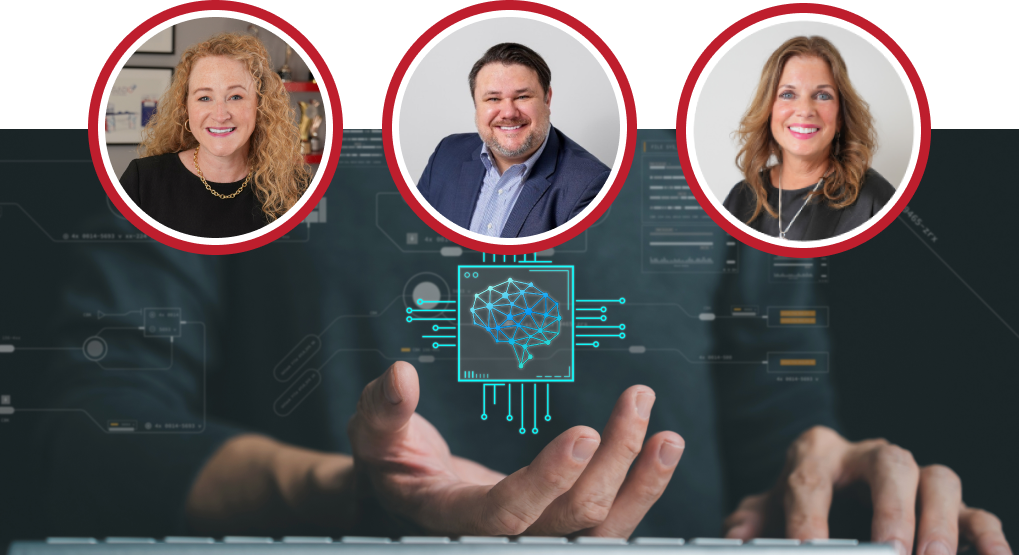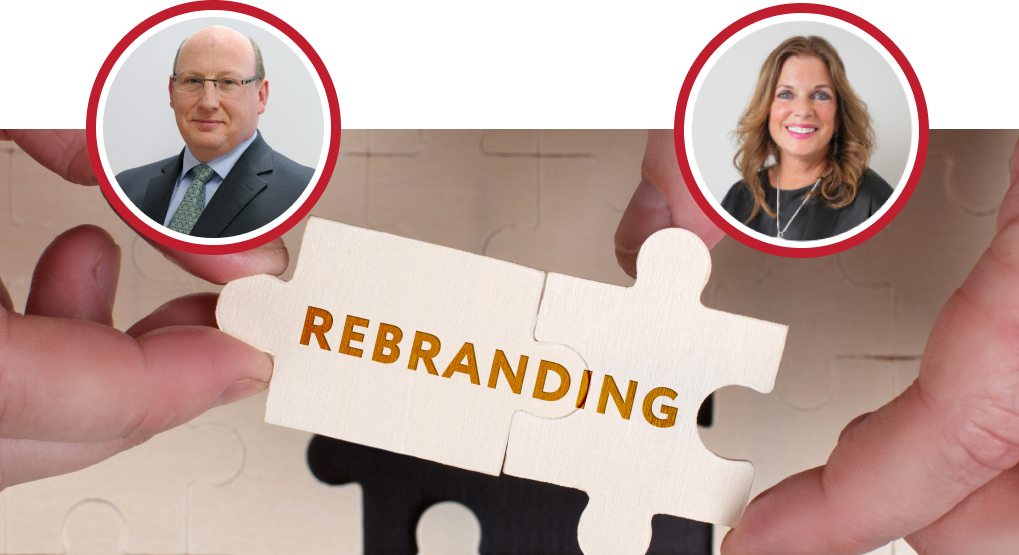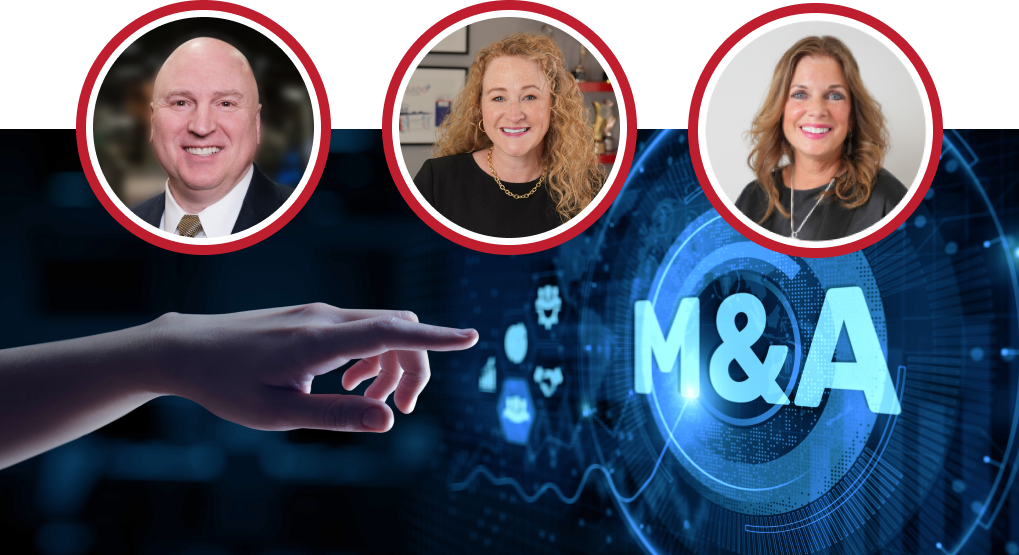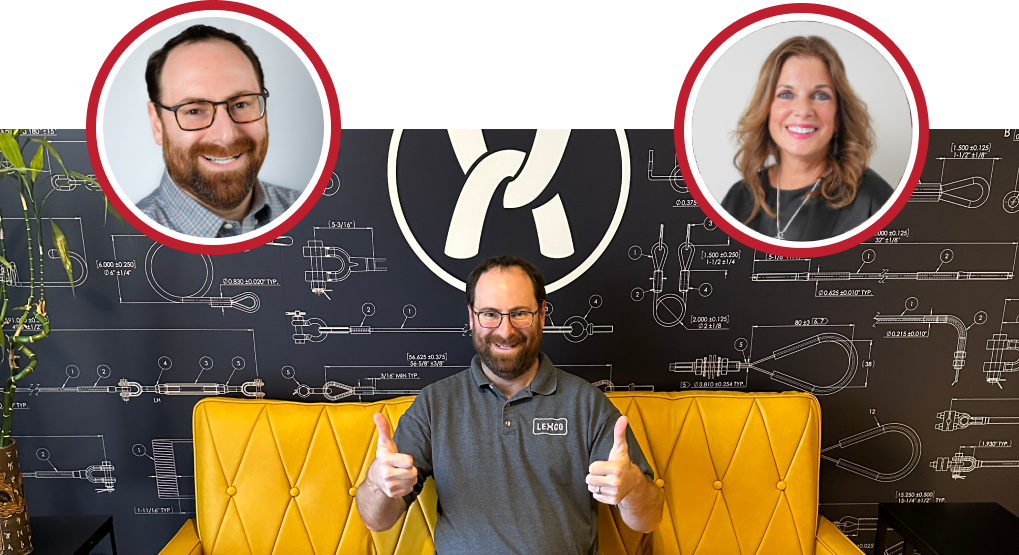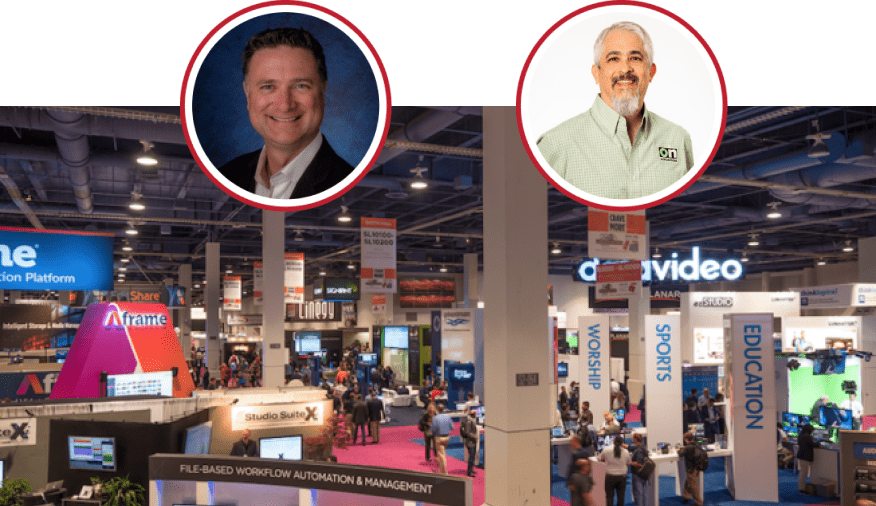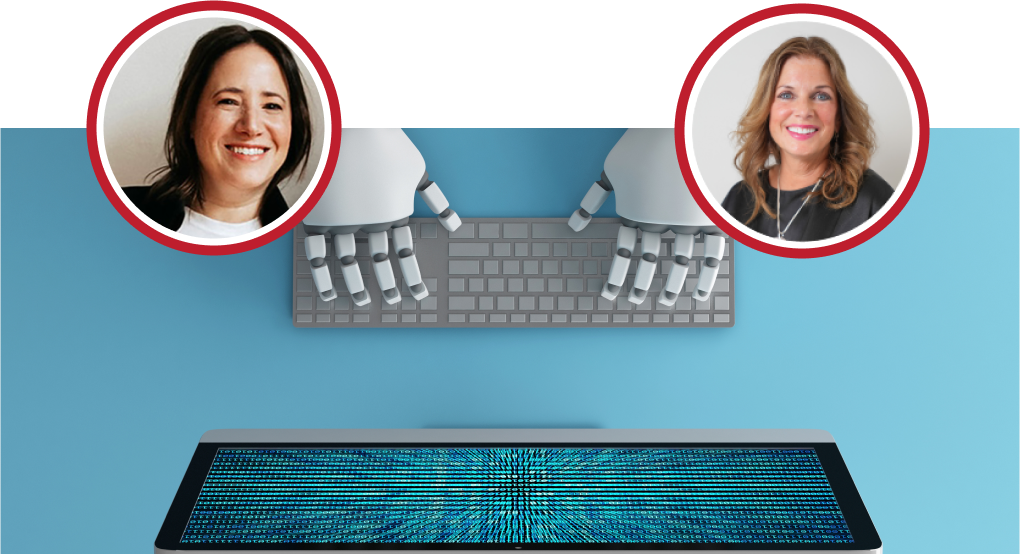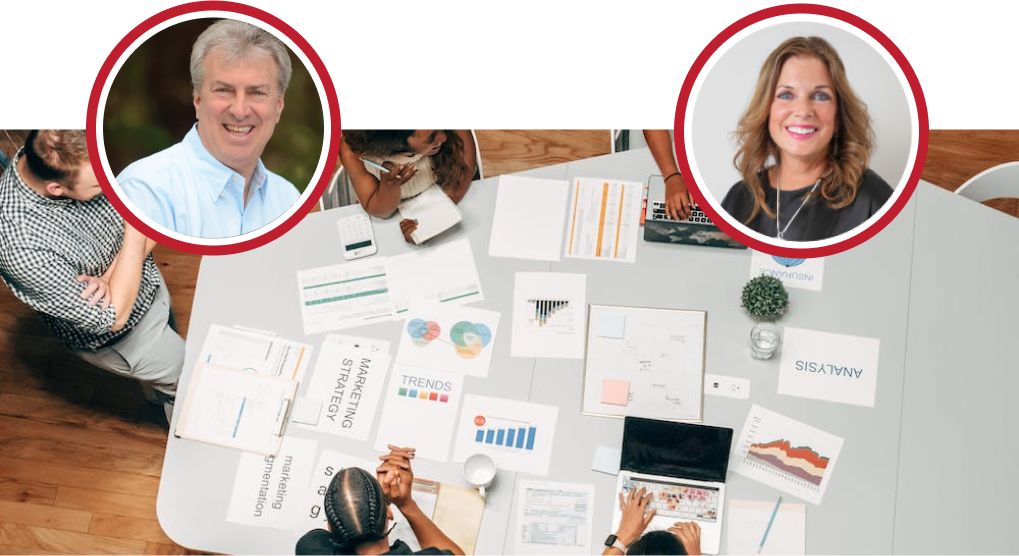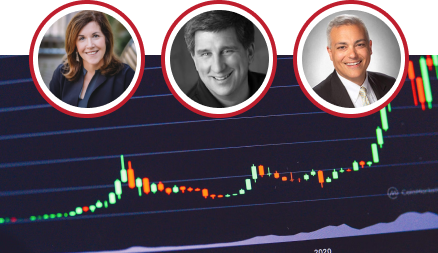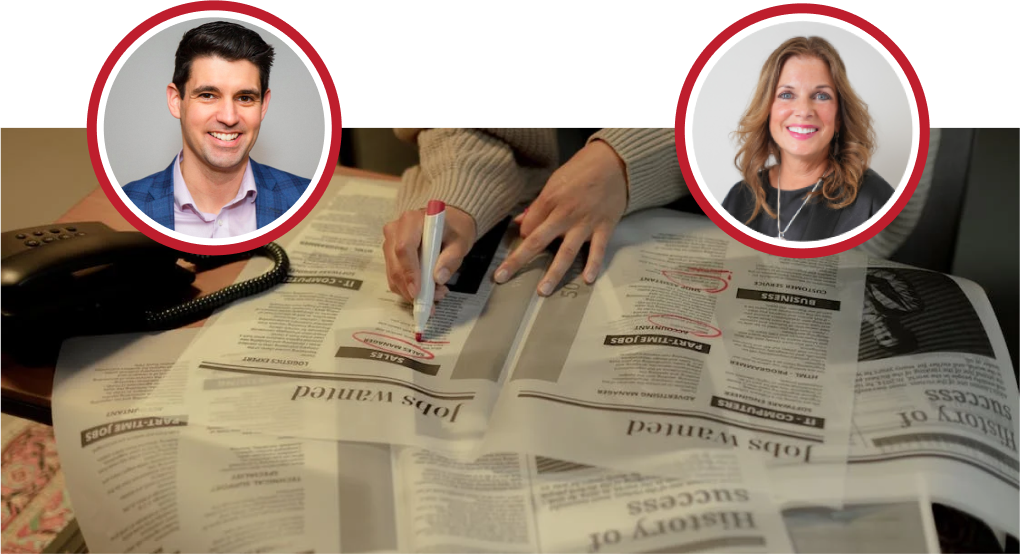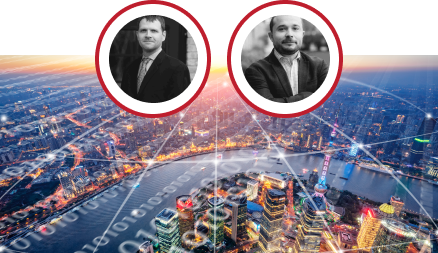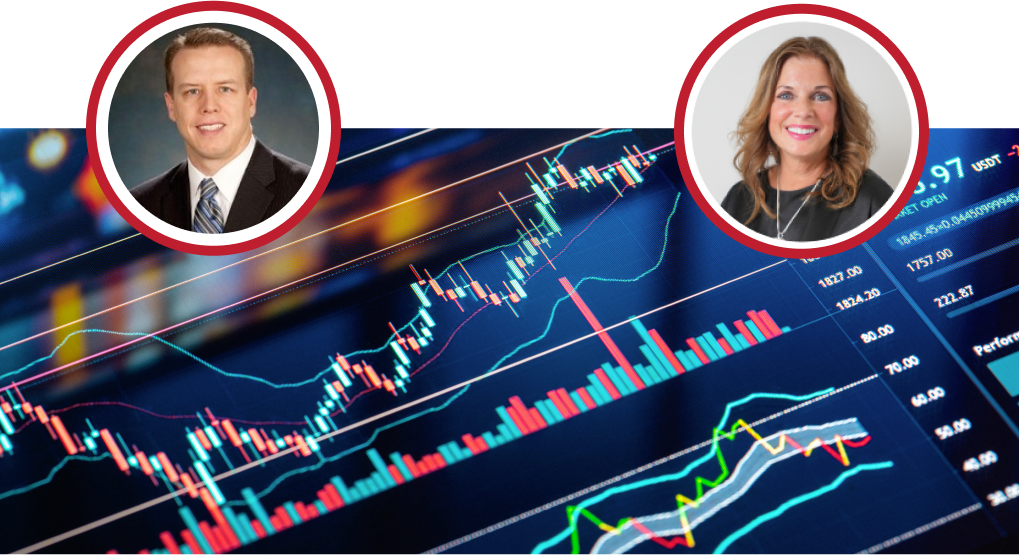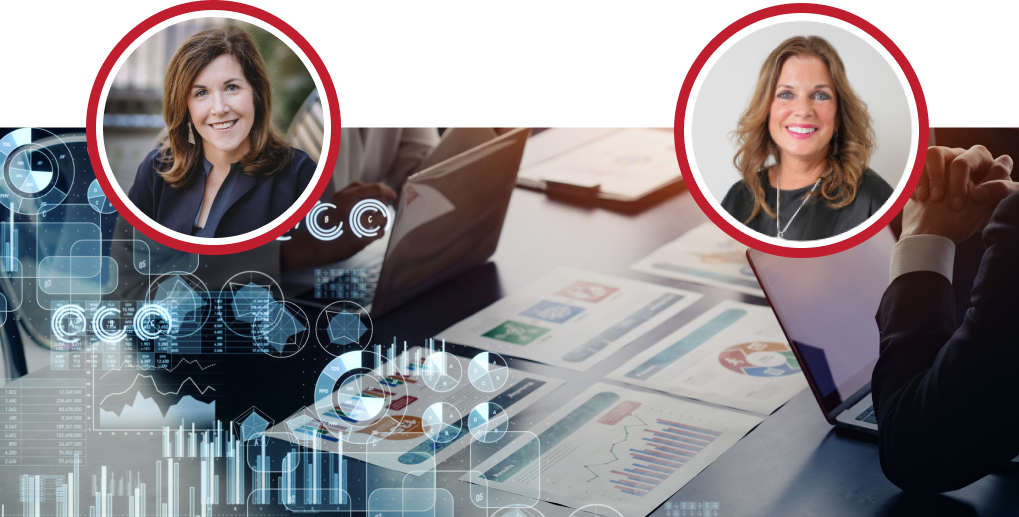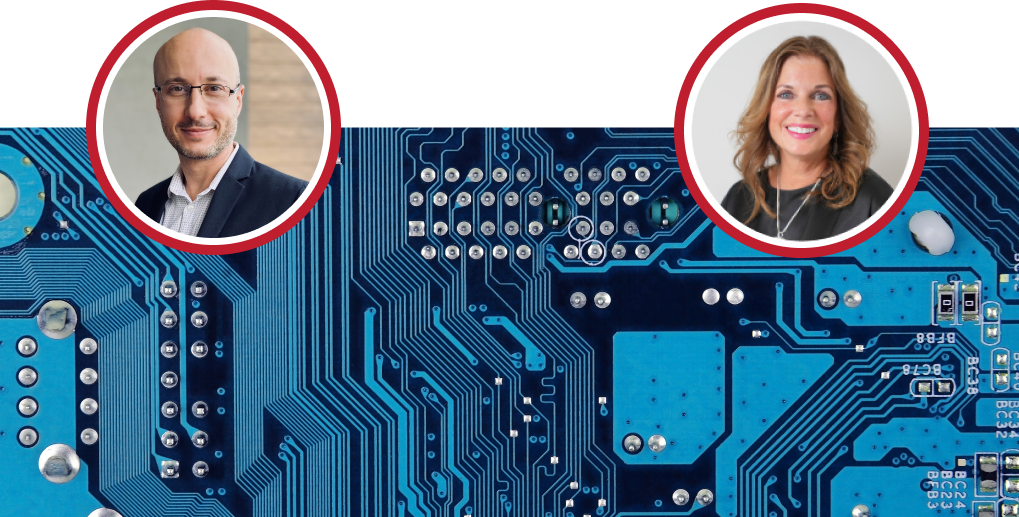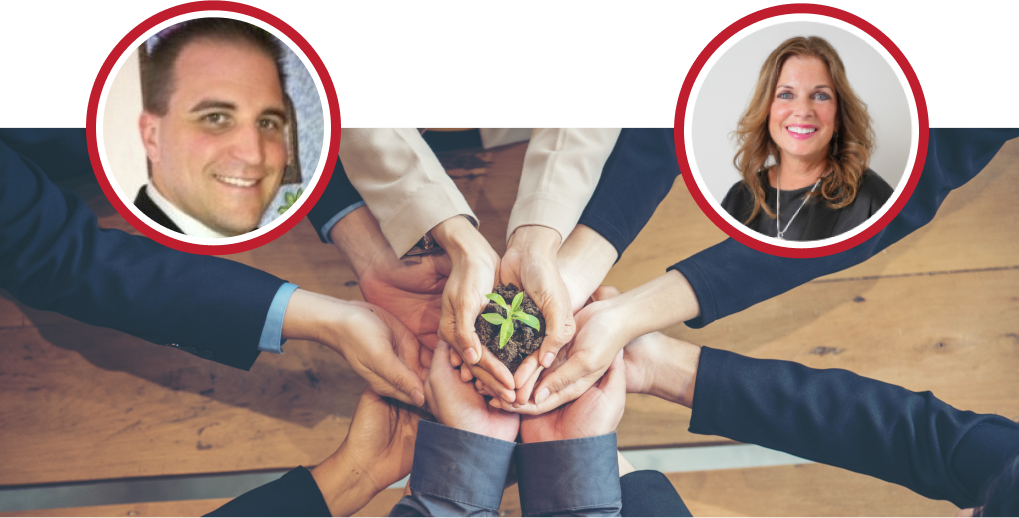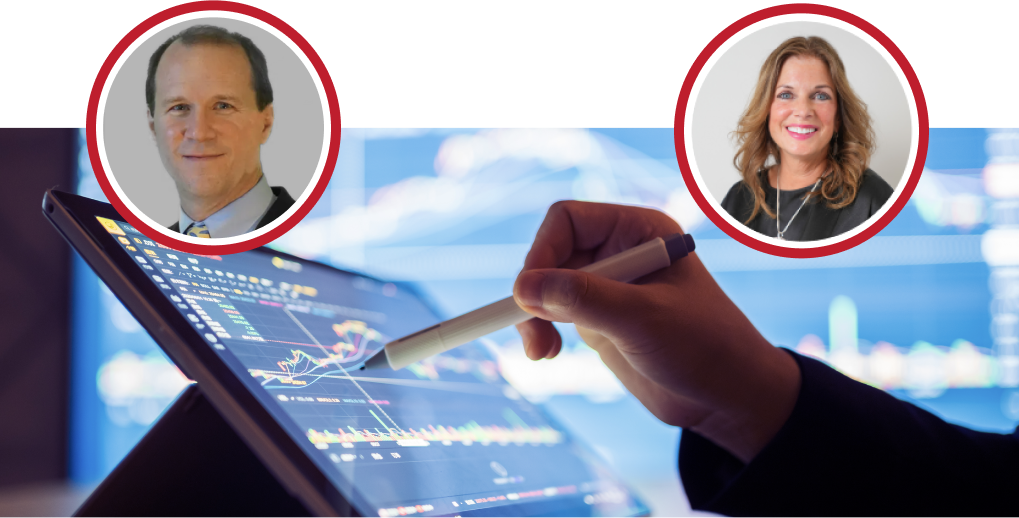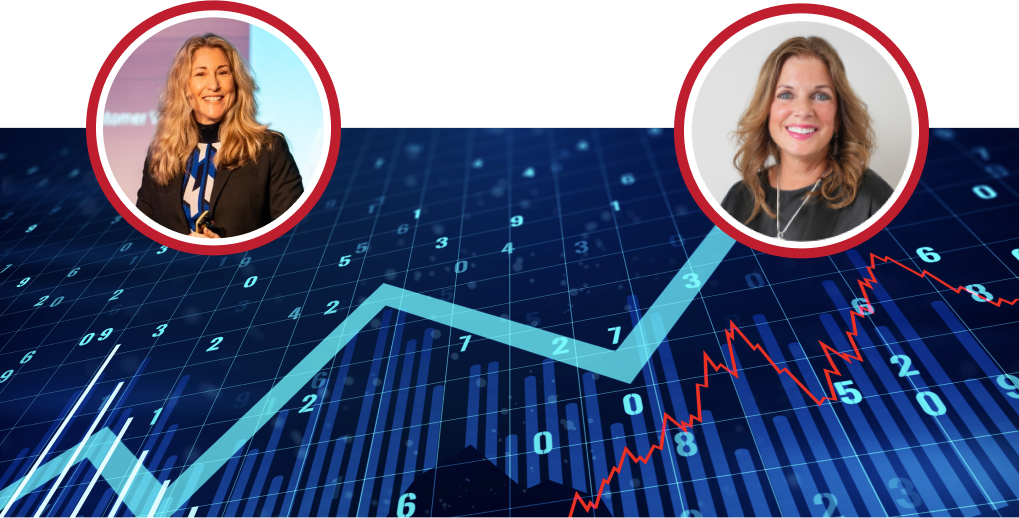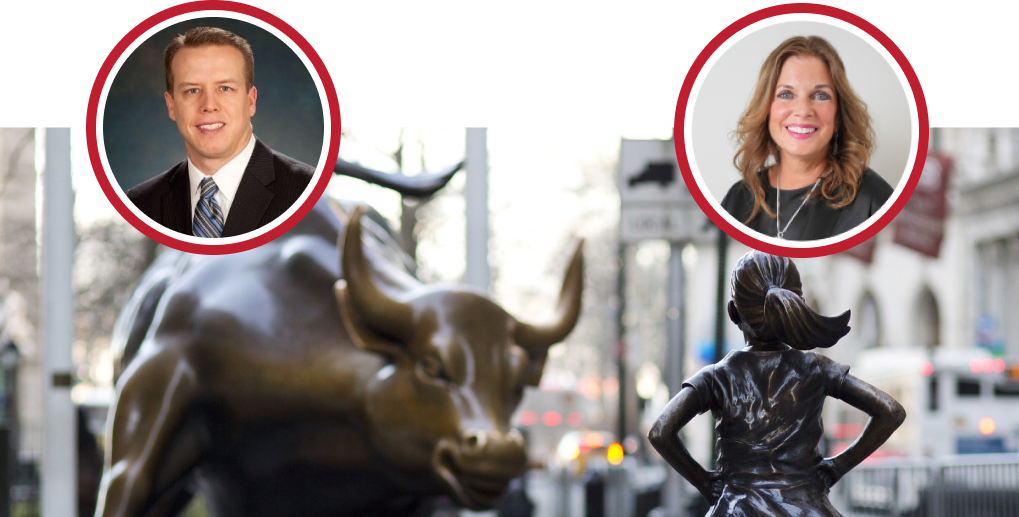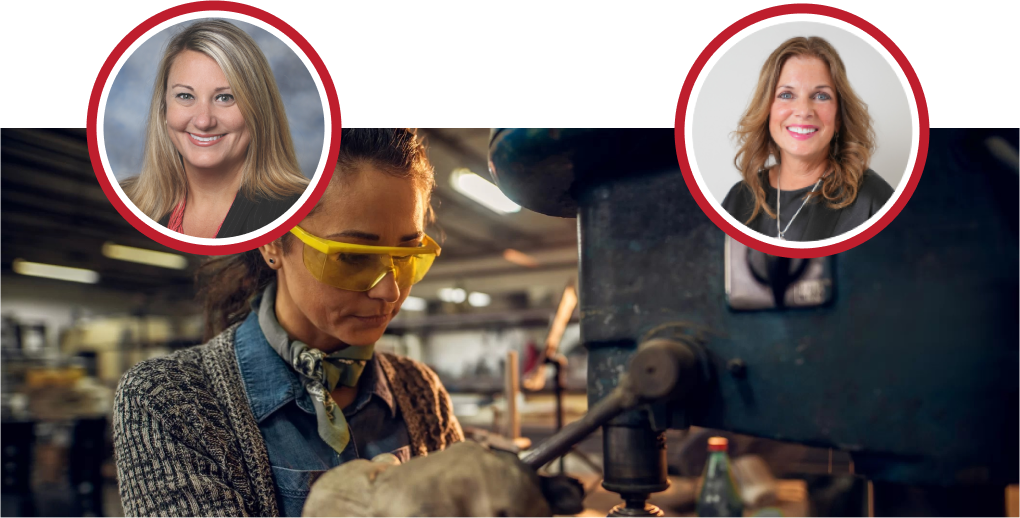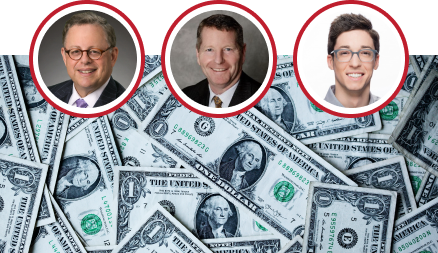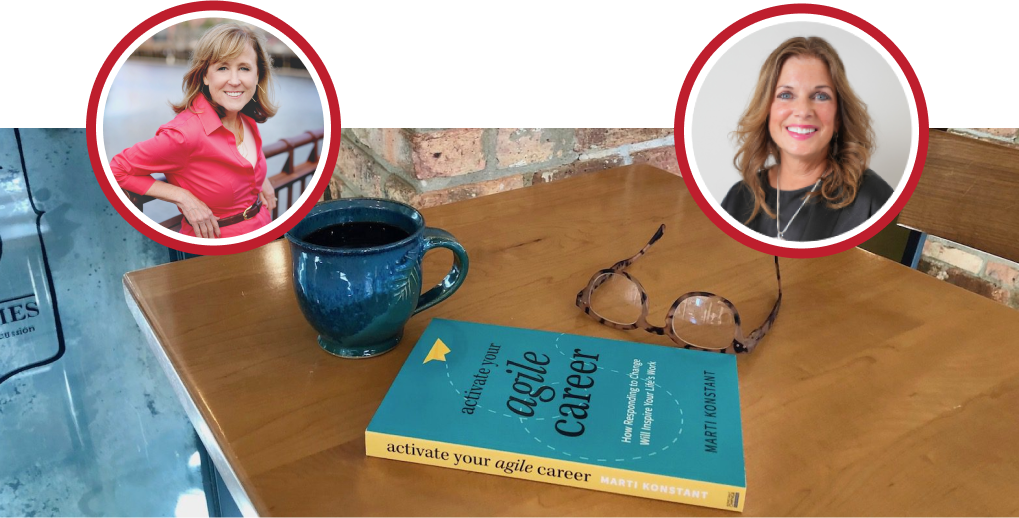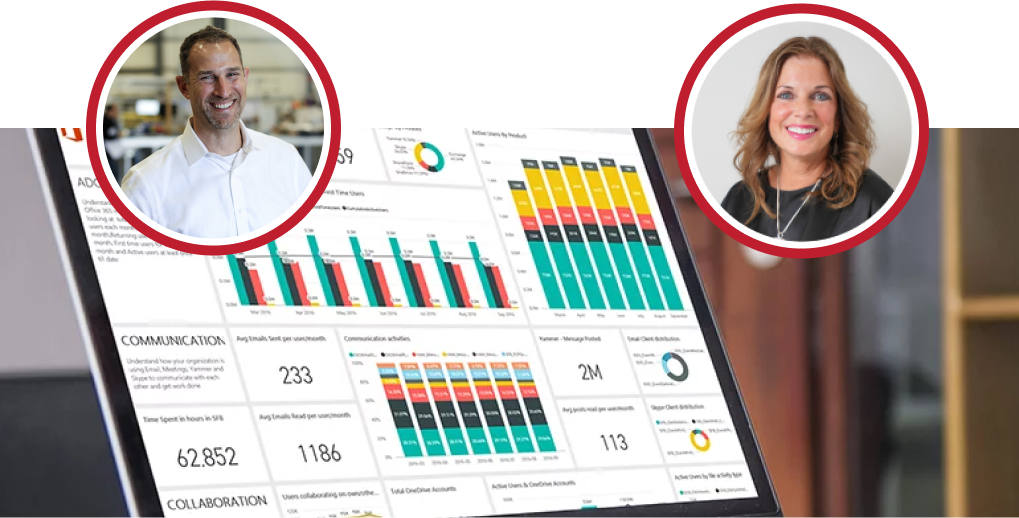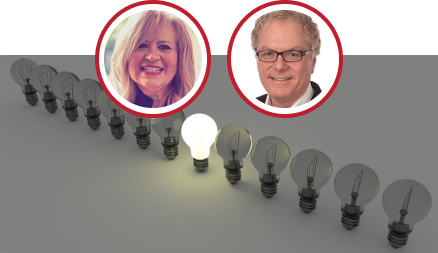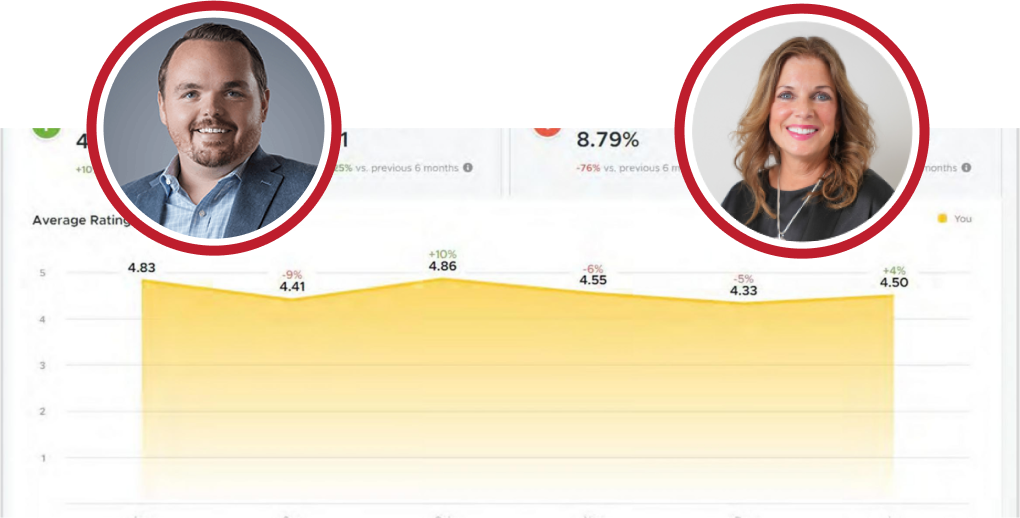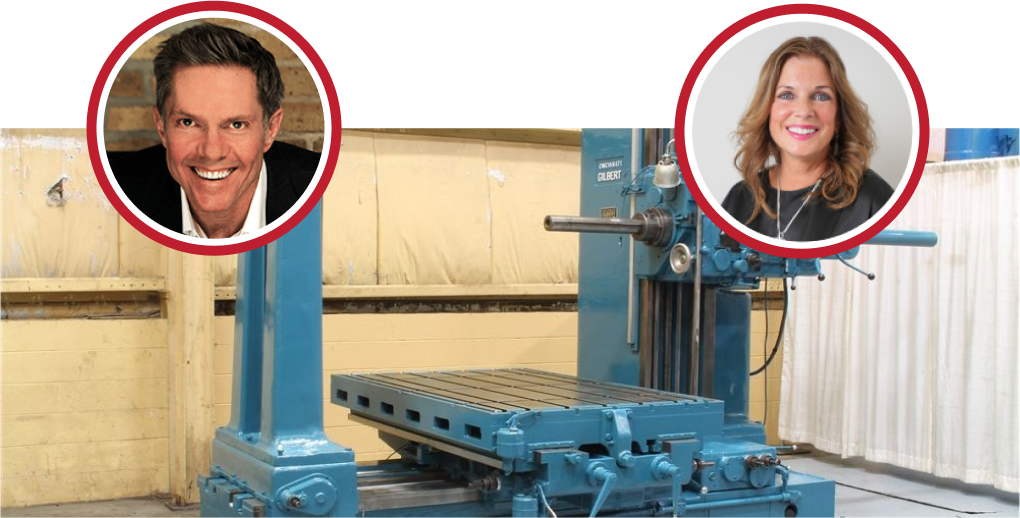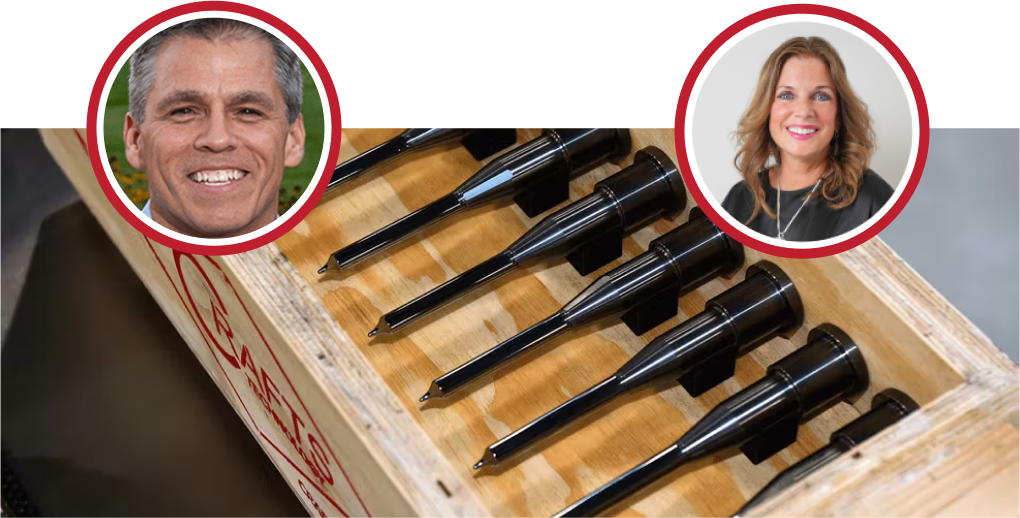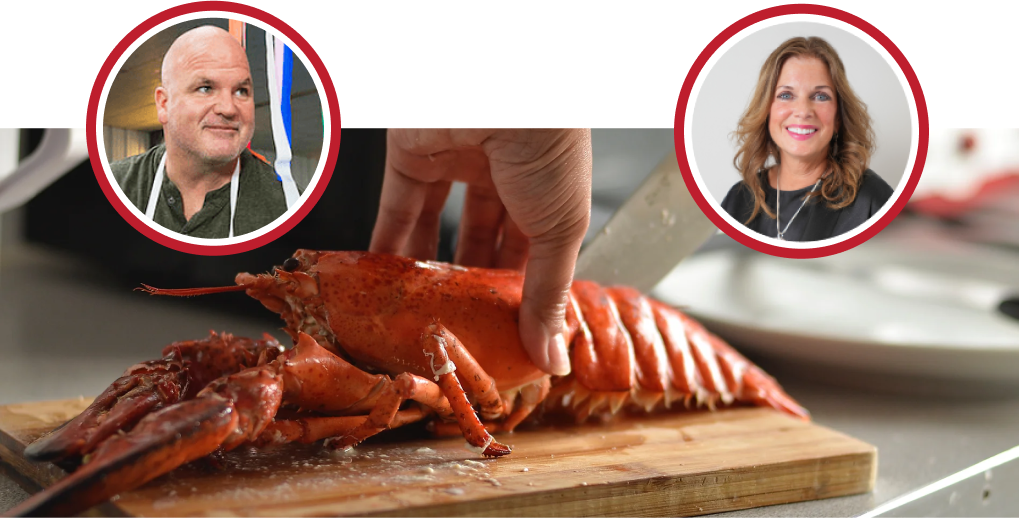Kathy: Going to first introduce my co-host, Mary Lynn Fayoumi, and if you were with us last month, she’s a workforce expert. She’s the CEO and President of HR Source, and then we also have Doug with us today, and I’m going to read his bio. Doug is sorry, I am sorry, but I don’t have; oh yeah, so Doug is the Managing Director of the National Center for the mid-market and at Ohio State University Fisher College of Business in his role as Managing Director. He sees to the day-to-day operations of the centre, which include the research, corporate outreach, and student activities, in addition to the long-range strategic planning and sponsorship stewardship prior to launching the NCMM in 2011. He spent ten years with l brands where he worked in various roles, including supply chain planning, so he’ll have some thoughts on what’s going on in our supply chain distribution centre operations and financial planning and analysis supporting brands such as Victoria’s speed secret and body bath and body works. So, Doug, thank you again, you are a returning guest as well, and we’re really thrilled to have you tell us a little bit of some things about you that are not in your bio.
Doug: Oh, wow, you caught me off guard there. Yeah, so I’m I guess I’m a native Ohioan. I grew up in Northeast Ohio, kind of some interesting facts, I guess, so I attended Penn State University for my undergraduate degree, and I played football there for a couple of years. I was a walk-on defensive back. Unfortunately, during my sophomore year, I suffered a pretty serious knee injury, I had a couple of surgeries, and through the rehabilitation process, I actually decided to medically retire. I ended up coaching for two seasons as a student assistant, so I thought about getting into that actually as a profession. I was dissuaded by many people in the profession from doing that, and I’m glad they kind of steered me away because I’ve noticed it’s a kind of crazy career path for people who get into college coaching. So yeah, that’s led me to where I’m at today.
Kathy: Excellent, so well, let’s jump in, I think, sort of to tee things off. We always start with, really kind of our mission in helping people see through the different opportunities for growth in their business, and fortunately, today, we’re going to talk about all the different growth lanes that organizations can pursue to grow their business but turn it over to Maryland to kick us off with this the first question.
Mary: Thanks, Kathy and Doug. I just love that you’re also a big ten guy. I’m a die-hard Iowa Hawkeye very excited, and I love college sports, so it’s a big weekend coming up with all these tournaments, so you might not root for the same teams, but I love the big ten, and if you’re not playing my team, I’m probably rooting for one of yours. Sorry, tell us a little bit more about the National Centre for the middle market.
Doug: Yeah, so we are, we’re the nation’s only research institution devoted to studying , mid-sized companies in the U.S. We were founded a little over 10 years ago so originally a partnership between the Fisher college of business at Ohio State University and G.E. capital they were our kind of we define the middle market, and this is one of the early questions right because there is a lot of , I would say inconsistency if you’re talking to various banks many of them will say well our middle market is this and another bank will say well we tend to focus on this group and even the U.S. Government I mean we’ll use, we’ll tend to use more like head count based definitions when you talk about the SVA and so forth so very early on we defined the middle market as those with annual revenues between 10 million and a billion dollars it’s a huge range we know that but in a lot of our research we’re able to create sub-segments within that range so that you’re truly looking at lower middle market companies let’s say 10 to 50 million that tend to behave more like small businesses versus 500 million dollar companies which are going to start to look like larger organizations multinational and so forth. So yeah, we focus on a few things our mission is to help mid-size companies grow, and we do that by conducting a variety of different research programs today I’m going to focus on the middle market indicator which is somewhat of our bread and butter research it’s a semi-annual survey of companies across the U.S. we’ve done topical research we’ve funded academic research at about 40 other schools around the world in addition to that we are pretty active in outreach and engagement, so we’ve got a number of partners around the country presentations events and so forth and then from an educational standpoint that includes both students so for example I teach a class in our undergraduate program at Fisher College on the middle market we think it’s maybe the first and only of its kind in the country, and we’ve also done executive education training as well where mid-sized companies have come to campus to improve right and make their team stronger, so it’s really a pretty unique program, and currently we’re working with Chubb and visa who are our partners in this effort.
Mary: Well, that’s really cool and so interesting to know that you’re the first of its kind in terms of the program, and I love that you’re bringing the education down to the students because we’re going to get into more of the topics, but so much of what makes America work happens in this mid-market so really interesting, a perspective that you have Parker if we could advance the slides just pause for a minute awesome on that slide very helpful, and then we can just move to the next slide, and I think you’ve covered most of this already Doug but is there anything as we reflect upon how the mid-market has been impacted on this volatile crazy environment we’ve been living through that might shed light on how the mid-market is the same as companies of all sizes are uniquely different.
Doug: Yeah, so it’s a good question, and I do want to add a little bit more detail to the methodology around the middle market indicator we launched in the spring of 2012. So, shortly after we opened the doors in the center we realized that we needed a tool to be able to understand performance sentiment kind of the thought process and what are keeping middle market leaders up at night, so we designed a survey that has essentially over this will this is our 35th wave actually now that I’m doing the math on that, so we’ve got 35 of these surveys again of a thousand companies coast to coast all various industries all various sizes within that range, but the foundation has remained relatively consistent it’s about top-line revenue growth employment growth confidence in various levels of the economy challenges that these companies are faced and then finally where they’re investing their capital so by just looking at this five kind of broad pillars it gives us a really good sense for how the middle market is not only performing but some of the headwinds that we might be seeing and then of course over the years we’ve evolved the survey to include special questions, so those might be very topical things around regulations policies , tax changes things of that nature and as we’ll talk about during the course of this discussion when we designed the survey for the end of the year 2021 two of the big issues facing all businesses were supply chain disruption as well as the challenges around the workforce that we’ve seen since the pandemic, so we’ve got some data to share on that as well but also important to note that as we collect the survey all the data gets weighted to the U.S. census so that it accurately reflects the middle market in other words we’re not being influenced for example by over indexing in a certain industry or in a certain part of the country either that waiting is really important to note because it does truly represent an accurate reflection of the middle market.
Mary: Interesting; one other question. So, would you break down for us just in averages about how much of the typical survey is same questions survey over survey versus unique or new like is it 75 to 25 where you have a set of standard questions or does that continue to evolve as well?
Doug: Yeah, that’s a great question. I think about 70, 30 if I had to put a number on it, the value that we get out of maintaining consistency is that you can see trend data right so those five pillars that I’ve mentioned we’ve not really touched those much at all, and I can literally go back 10 years and say this is what the middle market was telling us 10 years ago in April 2012 as they were a lot of these companies were still feeling the effects of the great recession we all remember that the crisis of 07 to 09, and then you can just see how thing the patterns change over time, so there is a lot of importance that we place on consistency, but we do make a really strong effort to include new questions every time because we know the issues and challenges as we all know I mean they’re constantly changing even from day to day so in some regards our data that we collected just three months ago there are misses in there because we didn’t see a war coming in Europe and the inflation issues have really gotten kind of out of control, so yeah there are some restrictions to be taking a snapshot in time, but again we’re really happy with the trend data that we’ve been able to collect.
Mary: Great, well, we’re excited to get into it, aren’t we, Kathy.
Kathy: Exactly, yeah, so and I think it’s, it’s great to kind of see some of this information validated. I know, Mary Lynn and I both work with a lot of mid-cap businesses, so we see things anecdotally, so it is it’s really nice to see this larger sort of research conducted, so we can marry that up with the things that we’re witnessing just in our day-to-day client relationships, so I think we’re going to switch. We’re going to advance into going through some of the reports. So, what is, what’s new, Doug, what’s happening?
Doug: Yeah, so the last couple of surveys obviously big the top line story has been to Covid 19 pandemic we quickly went out, and I think one of probably the best things that we did was in March 2020 literally just three or four weeks after the World Health Organization declared the global pandemic we went out and pulsed oh I think it was about 250 companies, so these were all companies that had completed our survey just a few months before at the end of 2019, and we wanted to get kind of a quick sense for like what was going on and of course we all remember like pretty much everything was just shutting down, and we followed that up over the next several waves of this MMI with ongoing questions around that fortunately i think fingers crossed right like we don’t know what we don’t know we’ve different groups have said this before like hey we’re at the end we’re getting to the end of this it does seem to be like the light truly is at the end of the tunnel we’re kind of moving away now from a lot of questions about the pandemic because if we get the sense that a lot of mid mid-sized business owners have just they’ve learned to adapt they’ve pivoted they’ve made the decisions and adjustments that they have been needed to adapt to whatever circumstances they’re facing whether they’re in a restaurant or retail industry we know all the restrictions that have been placed on that industry or whether they’re doing something else so the interesting thing for us is of course the last couple of years have been tough in many regards, and we saw for the first time in that 10-year history of collecting this data we saw negative growth rates so actually declines in the average revenue across the middle market now in the summer of 2021 so about nine months ago when we did our mid-year survey that number had actually improved it had gotten back into the positive unfortunately though when you dug a little bit deeper into that there was a very small group of companies that were growing double digits kind of high fire rapid growth and another about 35 to 40 percent that we’re still struggling, so it was very much a split type of recovery and that was somewhat covered by this average what we’re seeing now though at the end of last year was this recovery seems to be more universal and that’s what you’re seeing on this slide is that two-thirds of the middle market are telling us as of the end of last year they’re actually doing better than they were doing pre-pandemic which is great news and the growth rates as we’ll talk about here in a moment are at record highs, and it just seems like more and more of the companies are taking part in that and are experiencing that same amount of positive return to the very strong and consistent growth rates that we had seen prior to 2020.
Mary: Doug, are we talking here about just top-line revenue growth, or are we also experiencing positive changes in profits and cash flow?
Doug: Yeah, so we don’t; we tend not to get into profitability. So, 90 of these companies are privately held. We made that decision early on that we don’t want to kind of get into, like behind the financials keeping it at the top lines is very easy and kind of straightforward, and revenue is revenue, right. So, we don’t necessarily talk about those types of things, although I would say anecdotally, we get the sense that a lot of companies have pivoted; they’ve introduced new products and services over the last two years that have driven not only top-line growth but ultimately higher profitability as well the other thing that we’ve seen is really high growth rates in employment, but the challenge as we all knows are going to be whether that can continue in these extremely tight labour markets.
Mary: Exactly, and I think if we go to the next slide, some of that is referenced here, right are they, yeah this is kind of yeah, are they going to keep moving up.
Doug: Right, so this is ours. I would call this our standard dashboard of performance. We’ve had this in place for many years now as well. It’s kind of a nice chance to just see how things are doing overall. The top two numbers there you see from revenue growth and employment growth all-time record highs over 35 surveys, so again just very positive signs coming out of the middle market. We make some comparisons so that you can see there’s a comparison in terms of revenue growth to the SP 500, which is about eight and a half per cent for 2021. Generally the middle market has outgrown both large and small businesses we’ve seen a few inconsistencies with that but it kind of we’re kind of like back to the normal patterns that we’ve seen and similarly in employment we use a group called DAP has a very nice monthly jobs report that they publish now they use a head count based definition, so this is like a proxy where for small business we go from 1 to 50 for the middle market we use 51 to 500 and then anything above 500 would be a large business of course that it’s going to vary by the type of industry you’re in and the types of human capital resources that you need, but this is a very consistent pattern where growth in the middle market it hasn’t been a shock for us to see kind of 2x growth in terms of the average number of employees that are hired then you focus on the projections, so I think this is interesting as we talk about what’s going to be coming in 2022 again 10 top line growth projected and over 10 employment growth but again going to be very interesting to see if the middle market as a whole can actually achieve this right because I think one of the big challenges that’s been surfaced is just finding the right people retaining the right people and the war for talent has never been greater capital investment planning again that’s just we’re kind of getting a sense for our companies holding cash are they going to invest it back in their business if so where is that going and then global confidence levels these are the pattern that we see here is very common as well where confidence is highest in the local economy because that’s where a lot of these companies do their business their suppliers their customers all tend to be and when we say local that could be a city a region and where global tends to be the lowest just because a lot of middle market companies don’t participate in international markets and that tends to be the area where they have the least amount of control or impact right.
Mary: So, it’ll be interesting to see in your upcoming survey again whether those numbers right the delta grows larger between the global economic confidence and the local economy given what’s happening.
Doug: Yeah, I would assume that’s going to happen. I mean, we think it’s a little too soon to ask the middle market. How the Ukraine situation is going to play out for them. I mean, certainly, there’ll be indirect consequences, whether it’s, rising fuel prices and all the types of things that we see in the news, but yeah, that’s going to be an interesting one to watch in a couple of months.
Kathy: So, we do have a question, and I don’t. I don’t know that it’s touched on, but does corporate sustainability play a factor in any of the dashboards or any of the investment targets that you’re getting feedback on from this middle market.
Doug: Good question. I don’t think we have a direct question about sustainability efforts. We may have done that once or twice in the past. It’s certainly not in our ongoing question set, but given its importance of it. I mean, that’s probably an area that we’re going to consider including in maybe future surveys and starting that from a trending standpoint; yeah, it’s just it’s a major topic a lot of the mid-market companies that we talk to and work with either through projects or interviews that we do it always tends to come up. So yeah, I think that would be a great addition to this data set, but it’s not something that we’ve traditionally had before.
Kathy: Yeah, I feel like we talked about it last time you were a guest, and it just was more anecdotal than it was actual, research-driven so.
Doug: Yep, that’s right!
Kathy: Well, let’s dive into some more of the data.
Doug: Yeah, so this is just a little bit more information on that investment a lot of times, we get a lot of questions around like oh, where, so where are middle-market leaders looking to grow their business reinvest back into the business these two pie charts are a little bit of a comparison between the mid-year and the year-end so that mid-year survey that again was conducted in June of last year’s on the left you can see that the largest planned destination for capital dollars at that point was plant and equipment followed by information technology and then more personnel now that we’ve gotten to the end of the year, and we’ve also seen this from time to time when these categories tend to flip-flop back and forth. So, that’s not necessarily surprising but it is now kind of taken over that top spot where the quarter of the company’s saying that that’s where they would invest their capital we’ve been talking about this for a few years now as well I mean even pre-pandemic the center had been doing work around digital transformation in the middle market and that has been that has played out to be critically important whether by necessity or by design right so with a lot of the work from home, and remote work and I think it’s just exposed certain opportunities as well as risks around cybersecurity right like making sure that your data is protected because now you’ve got people in home office environments they’re no longer just accessing maybe confidential information from the office they’re maybe sending these things over email, or remotely accessing financial systems and things of that nature and then more personnel again to the issues around workforce coming in second followed by plant equipment and training so yeah this is just it gives us a sense for maybe not the growth plans necessarily but what are what’s on the minds of these decision makers as they think about where they’re going to reinvest back into their business.
Mary: Doug, just a quick comment, but you might have something further to say on it, so in the more personnel category, going back to the question about a dollar to invest. So, many employers have to increase their salary budgets, add benefits, bonuses all sorts of things, so do you think that more personnel categories could also be baked in a bit of the cost it’s taking to retain the team yeah members that we have.
Doug: That’s yeah, that’s a really good observation. I would tend to agree that the total cost of compensation is more likely included in that as companies are thinking about it. It’s probably something that I would have to go back and look at the questionnaire to make sure that that’s clearly defined; if not, we should think about adding that in, but yeah, I clearly to your point, that’s becoming what the levers that are being pulled and the tactics that are being utilized in this battle for the talent we get that question all the time it’s like hey Doug you’re telling us that middle-market companies are struggling to find people well what are they doing about it, so I’ll, again we collect some anecdotal responses to that as well are, but I agree that it’s around salaried it’s around things like employee value propositions and what are the tangible and intangible benefits that companies can offer in order to keep and retain people.
Kathy: Well, I mean, you could even sort of say that the i.t investment could be related to the workforce because you’re not really breaking that down. That could be an investment in automation where you might have had somebody doing something more manual, so it is interesting to sort of think about their pretty big topics and where those dollars are going. Yep.
Doug: Yeah, this is just, so I think we’re going to shift down more to like, okay, that’s kind of what happened now it’s like as we look forward to this year to 2022. What are we seeing and hearing from these businesses about their plans their expectations around the upcoming year again a lot has changed right we talked about some of the negative things that are happening we’re also seeing a lot of positives around I mean I can just speak for Ohio State University we’re dropping our mask mandates on this coming Friday I’m getting more and more invitations for return to work and requests to travel or return to live events and travel and things like that, so there’s going to be a lot of changes I think that are constantly happening but at this point as I mentioned a little bit earlier the projections for the year are at about 10 which again you can see some of the last couple of waves this is the highest we’ve ever seen, and I would also mention that you remove the pandemic out of it in many instances we have seen a pattern where middle market leaders tend to be highly conservative in these projections in other words they kind of under promise and over deliver so if you were to map these projections against the actual that pattern is almost consistently the projections are below by two or three percentage points, so again we’ll see what happens with this the latest round, but that has been something we’ve talked about for quite a while now is the conservative nature around the estimates.
Kathy: Yeah, we like to hit and exceed our goals, right? So, what are some you’re going to speak to some internal challenges like what parker if you go to the next slide this is where we’re going to see a lot of focus this year?
Doug: Year. Yeah, so this is kind of a reflection of what I had talked about earlier; we’ve been tracking this kind of Covid-related impacts, and we’re going to continue to back away from using that type of phrasing, but I think it’s just interesting to see over the course of the last year and a half how the percentages have changed. So, you look to the far right and right now, some of the biggest challenges around or around the supply chain; a lot of us saw the disruptions that happened in the fall and 150 container ships docked off the port of Long Beach, and all these types of things and then employment, but there are other challenges as well there are impacts around growth initiatives I think we were chatting a little earlier about how difficult it is to do a strategic plan that’s a year or three years out when the conditions on the ground are changing so quickly, so it’s almost about being more nimble and flexible and adaptive which the middle market has been great at over the years through a lot of our work has shown that is one of the strengths of a lot of these companies international that certainly presents a lot of risks we did some work a few years ago with the Brookings Institute, and the data we collected like less than 10 per cent of the middle market had significant involvement internationally. So, it’ll be cured. I’ll be curious to see if that changes over time. Even though it’s a pretty big growth opportunity, there are a lot of risks and kind of lack of capability in that area, and then yeah, capital spending demand these types of things, but supply chain and employment were the two that we really went a little bit deeper on this round.
Kathy: Excellent, well, let’s step into some of that.
Doug: Yeah, so this is a question set that we started oh probably four years ago now one of our partners is chub they’re the world’s largest publicly traded commercial insurance company based in Germany but strong operations here in the U.S. and so we started asking about these various risks, and you can see that we added in pandemic risks as well, but they tend to kind of EBB and flow over time as companies think about how they’re dealing with these challenges potential mitigation strategies but the two that are highest right now again the ones outside the pandemic I kind of touched on already supply chain risk almost half the companies are saying this is a significant risk for them and also looking at some of that technology we talked about earlier it’s kind of hard to see with this rainbow of lines, but cybersecurity is the number three that 42 percent in purple this wave is a pretty significant concern interestingly I just saw an article in the Wall Street journal about middle market companies and m a transactions and how there’s been more and more incidences of cyber breaches and data hacking and ransomware and all these sentences. So, it’s funny because it’s not funny, but a few years ago, when we were working with Cisco, we did some work around cybersecurity, and most middle-market companies thought that you simply didn’t target because they thought, oh, that’s a big company issue right they’re going after the multinational Fortune 500 company, and we would know in no way be any type of risk, but unfortunately, that’s becoming more and more prevalent, and it’s increased the need for these companies to be prepared for those types of things hence the investment in I.T. as well.
Kathy: Yeah, I mean, they say hackers are somewhat lazy, and they want to go after easy targets, so market businesses don’t have the budgets and infrastructure to really deploy against those types of attacks. So, I definitely have seen it with our clients and in ourselves; it’s really scary, and it’s just getting smarter and smarter, so is this something going into the next slide? Is it something that we see across all markets or all sectors?
Doug: Well, as you might imagine, there are some industries that are more susceptible to supply chain risks, right? So if I’m in manufacturing, for instance, I’m relying on raw materials parts components, construction is another industry; in fact, those were the two industries that had the highest prevalence of disruption not too surprising versus compared to, let’s say a technology company right they may not have as many exposures to what I would be traditional supply chains in that regard, but yeah it’s a pretty big issue so as you can see here about 50 of all of the companies said that they had experienced some form of supply chain disruption in the last half of 2021. So when this really started to become kind of headline news I would say august September as we were approaching the holiday season, and I remember seeing like oh all these toys and holiday gifts are at risk because they can’t get to the stores so yeah it a lot of industries said they were impacted I think those two that I mentioned were the most prevalent of those 50 or so that had an impact eight the downside of this is 83 said it impacted their revenue you can see on the left here to the extent some of them is relatively minor but wow for over 40 percent said it had a five percent or greater impact on their revenue last year what’s even worse is that as these challenges continue to linger almost all of them 76 said this is going to impact this year’s revenue , and you can see the various breaks there, so this isn’t going away soon , so I’m a former supply chain professional it’s near and dear to my heart, so I tend to keep up on all the news and everything I’ve tried to read and keep up on the issues and understand what exactly is causing this none of these are quick fixes there are issues from truck driver shortages to now we know fuel’s going to be going up we’ve of course had the gridlock with shipping there are just a lot of elements that lead into this and obviously the middle market as it’s shown here is not immune from the disruptions within the global supply chain.
Kathy: Yeah, I mean, it’s been interesting to talk to clients. I mean, we have people that are complete, tapped for capacity of the products that they build and so really kind of taking the putting the brakes on some of the other sales activities because they just will not be able to increase their top-line revenue even though there is demand. So, it’s right; it’s a huge predicament. So, in terms of sort of the next, what are some of these highly challenging elements, or can you dig in a little further?
Doug: Yeah, so I don’t think anything on this list would be surprising to anyone, I mean. Certainly, if you’re running a mid-sized business, you may have experienced these, maybe multiple experiences these things, and like I said, given my background at a large Fortune 500 retailer. I mean these were always the things that we were worried about service disruptions that are unplanned are always those can throw a wrench into even the best managed supply chains if you had a natural disaster that came through and wiped out a major distribution center or stopped a train line, or you had a pilot strike, and you couldn’t get air freight shipped those are just things that you just can’t really plan for you have to have maybe mitigation plans you can try to do your best to overcome them, but those are just always going to be risks that are out there for mid-sized companies I think as you go down this list the complexity of the supply chain the size and scale those are going to be more significant challenges because as we’ve known through our work over the years a lot of mid-sized companies the term we’ve used is they have big company problems, but they have small company resources, so I enjoyed the benefit of having teams of hundreds of people that manage various elements of the supply chain a middle market company may have a small team of three to five people right they’re dealing with their vendors they’re managing transportation they’re working with customers on delays and so it just becomes a lot to manage. So, I think what we see here is validation that these companies are acknowledging that it’s a lot of work for us, so obviously, they’re going to have to start looking at either tool. Maybe those could be digital tools, those could be systems supply chain management platforms, and so forth that’ll help them cope.
Kathy: So, we did have a question from David, are these differences in other differences in these stats between sort of the lower middle market, and then she noted 50 million and above, but I would even maybe increase that number, or is this something that you’re seeing across the board or do you think there is some variation.
Doug: Yeah, they’re certainly going to be differences if we were to look at those three buckets that I defined earlier. So, 10 to 50, 50 to 100, 100 to a billion. That’s the way we define it; these issues will probably like shift and change, right, so the 30 million dollars come from the smaller and the lower middle market company may not have a global supply chain, for instance, so that might not even show on their list whereas they may have bigger issues with a competition or maybe not having the power to negotiate favourable terms with their suppliers, but certainly, I think industry size maybe even geography all three of those things could play a role in the severity of these various challenges it’s a great question I mean what I’m showing here is for the thousand company sample, but we could look at this at those various size breaks and most likely see differences.
Mary: Now, you’re also hearing from a lot of our member organizations that the large companies that you referred to as having the benefit of large teams to handle these issues are making it in some ways more challenging for the mid-market and small companies, they’re pushing the issues and challenges down, and they don’t have the resources the bandwidth to deal with them the way the large companies do.
Doug: Yeah, no, that does not surprise me in the least; being at a big company, we used to pride ourselves on the fact that we had these long-standing relationships, and we had the purchasing power to be able to say we’re going to jump to the front of the line if space is small on a ship or a plane we got treated preferentially because of our volume and a mid-sized company to your point a lot of times they’re playing a role in the supply chain of much larger companies so these issues as you’re saying tend to get pushed down, and it just amplifies the problem because they don’t have the sufficient resources to manage it.
Kathy: Right, so, I think we also, as smaller businesses are a lot more flexible than these large organizations, so you’re going to share some approaches to mitigating these types of risks. I do feel like we’re seeing a lot of scrappiness; we see a lot of innovation. So, what else are you seeing?
Doug: Yeah, so this kind of two approaches to this so on the left-hand side there are tools that can be used right to help identify and manage some of the risks also having visibility within the supply chain that was like the holy grail for a supply chain that I was always taught was the holy grail is like having end-to-end visibility if at all times when your raw components are in transit what’s on the store shelves I mean that’s how you actually manage from end to end, and you need these types of technology systems to access to data. So, seeing some of these tools here on data exchange and having systems that kind of talk to each other that’s pretty common sense to me working with a third party logistics provider again that addresses some of the resource constraint issues if you can have a partner that comes in and then takes over and relieves you of some of that burden of maybe having a fleet of trucks and managing your warehouse for you, I mean yes that brings in a little bit more collaboration demands and more sharing and ex those types of things but at the in the long run those can be extremely effective on the right-hand side of this slide though are things that we ask these companies okay so what are you actually doing given these challenges that are out there how are you addressing and I would say that a lot of this data has been supported by some middle market CEO forums that I had a chance to sit in later in the fall like right before the holidays and so not relying on a single source of supply right so like you’re not putting all your eggs in one basket so if there’s an issue with your one supplier maybe they’re shut down, or I don’t know how many stories I heard about where a supplier had to close their factory because they had a covid outbreak and all of a sudden like it just jams up the flow right in the pipeline, so there are challenges around that the one that I heard a lot quite a bit and this actually came from a lot of cos they said well we’ve just decided we’re going to buy more inventory we’re just going to keep more safety stock on hand that’s kind of like the cardinal sin because everybody wants to keep inventory low right that’s capital that’s working capital that gets invested in these products that may end up sitting but in their minds it was like this is what we need to do to keep our customers happy, and it’s a hedge against disruptions that we may or may not be able to control , and then these other ones again are more about flexibility and having more options available so that you can shift as needed should issues or challenges arise.
Kathy: Yeah, and we also are seeing people be more proactive around preventative maintenance strategy. So, trying to reduce downtime through other means versus it totally reliable and reliant on others.
Doug: Yeah, but so what you don’t see here, though, is some of these strategies that may have secondary effects, right? So, if I buy more inventory, that might mean I need more real estate, I need more warehouse space, so what does that mean for commercial real estate. So, there’s like trickle-down that I personally find very interesting I mean, we don’t have the bandwidth at the centre to explore each of these kinds of trickle-downs, but I think we’re certainly going to start seeing more of that.
Mary: Well, I’m excited to get to my favorite topic, the workforce, which is one of the reasons Kathy asked me to co-host today, so we could really spend some time talking about this issue that is in the headlines every single day. Talk us through what your data is showing, and then let’s break it down a bit and talk about some of the challenges and, hopefully, some of the solutions.
Doug: Yep, yeah, so I would preface this part of the discussion by saying workforce challenges are not a new issue in the middle market. We actually started seeing a big shift in this around 2014 to 2015. When we were asking those questions around what are the big challenges to your company what are the headwinds to growth in as I think back for about two full years the biggest challenge was implementing the Affordable Care Act that was like front and center for a lot of companies they were confused they didn’t know how they were going to go about it was it going to be a huge cost we saw these unfortunately like tactics being used that we didn’t quite we didn’t think they were very great, but it was like hey I’m going to keep it 50 people and then hire a bunch of seasonal intent, so I don’t have to comply with the mandate okay, so we’ll fast-forward about 2015 then everyone kind of figured that out it started to die down and then talent rose to the top, and it’s pretty much remained there for the past six or seven years employ unemployment even pandemic was record low right we were like two three percent very tight labor markets , so this isn’t necessarily a new issue I think what we’re seeing now though just businesses of all sizes are universally being challenged by being able to find the right people by being able to not only attract them but then keep them we’ve done work in the past around tactics that you need to have in place if you’re a well-managed mid-sized company you need to have talent planning like you need to be able to identify your high potential people you need to develop them in the right ways and give them opportunities for growth or else you’re going to lose them and now more than ever right with how many opportunities I see for people to work remotely I mean it’s no longer a geographic battle where you’re competing with people in your own backyard you’re now competing nationally right with if I’m in Ohio I’m competing with middle market employers in California and Texas and Florida who maybe have the ability to say we’re going to hire you at x multiple what you’re making now, and you don’t have to relocate. So, what do you think about that opportunity? So, there’s its the dynamics I think have totally shifted in the last couple of years and what we’re seeing here is particularly around not just having the right just not it’s not just about the total number of people they have to have the right skills too, and middle market companies pride themselves on doing things very well a lot of them are very niche, and have a very strong business that is laser focused on a certain product or service, and so they have to have the right workforce that can support that and support the growth so yes they’re being challenged I think the impact that we’re seeing, and you can see that on the right here with all the openings that are out there in a lot of these companies the current staff is bearing the brunt of that shortage by asking they’re being asked to be more productive by working more doing more and that’s what’s that going to lead to you can probably answer this Maryland better than I could, but burn out and people that are going to leave eventually right so.
Mary: Incidence, yeah, mental health issues burn out stress and then also physical ailments that are being caused by this right that 54 is a concerning number, and it over time only gets worse and has a ripple effect on all the other challenges.
Doug: Yeah, and then even the one that shocks me, so yeah, the 54 workings longer hours that is not sustainable. I was really shocked by the next one, which is a third of the companies saying we’re actually hitting the brakes on growth because we don’t have the people, right like that’s shocking, right, like what there’s no business class in any school in the country that would say oh yeah here’s what happens when you’re short on labour just slow down your growth, and it’s like right it just is so counter-intuitive right, but it’s necessary because again middle-market owners and operators they’re conservative they want to hit their goals they want to have satisfied customers. So, they’re really scared about overextending themselves and making commitments and promises that they might not be able to keep because they don’t have the people to be able to support the sales growth.
Mary: Well, I applaud you for having that question or that response in your survey, but also the candour and the honesty because I think now more than ever, organizations it’s reality, but the fact that they’re comfortable enough to admit it means they’re, in a pretty rough spot right because I think a lot of organizations slowly might be doing that kind of under the radar screen or one product or one department or one challenge at a time but beginning to address it as a more global issue in their organization or in their industry. Yeah, you can’t start solving the problem until you’re ready to admit to it.
Doug: Right!
Mary: So, let’s talk a little bit about the digital skills, and I wondered before we get into the nitty-gritty on this slide if you can talk a little bit or elaborate on some specific examples of digital skills that your participants are talking about when they’re answering these questions.
Doug: Yeah, so like I mentioned, we’ve been talking about digital transformation for a few years. We started with some work that we did really pulling together instances of various research projects we’ve done ranging from advanced manufacturing innovation globalization the common thread and all that was what role does technology play in kind of driving what I would call those business initiatives right I’ll take the advanced manufacturing project. So, we partnered with name the national association of manufacturers we were looking at the growth and the prevalence of mid-sized manufacturers specifically how they were investing in AI robotics like buzzwords that we weren’t sure were actually making it down to mid-sized companies and what we found was yes there were a lot there was a lot of that happening a lot of companies were investing in these types of new technologies on their factory floors, but the assumption was that that was coming at the expense of the workforce right that they were cutting back on people because the robotics would then take over a lot of , what were traditionally manual labor type functions that was not the case in fact the companies that were that had the most advanced manufacturing were hiring the greatest and those jobs were actually very high skilled jobs, so we’re talking about technicians and highly trained people that had to run the machines that had to maintain the machines that have to read data that’s coming out of the machines, so it was actually kind of striking to see the type of skills that that investment required that I would say that was what kick-started us down this path of thinking okay well, what other areas and initiatives would middle market companies really need to benefit by having people that are trained the right way retail is another one with my retail background I’ve seen big changes over time with this as well as more commerce has gone to mobile and e-commerce and phones that have required the skills of the retail worker to increase exponentially the store experience I mean there are all kinds of new tools that are being introduced into stores I remember when iPad started becoming popular and the salesperson can pull up inventory, and they can scroll on things, and they can check sizes, and so I think it’s just what it what’s interesting about this is you can talk as much as you want about investing in a platform or a technology or something that is going to provide lots of benefits but if you don’t have the right people behind it to run it and interpret it and use it then you’re not going to experience nearly the amount of benefit that you’re expecting or hoping for to again help drive business results.
Mary: So, helpful for you to illuminate that, Doug I mean, as interesting as the numbers are hearing, I mean that example is so powerful of the fact that the organizations that were investing the most were also hiring. It wasn’t one or the other. It was the combination of the two that was going to lead to growth and robust business results so.
Doug: I’m going to turn it back to.
Kathy: Yeah, I’m just going to ask one last question. If you could wrap it up with the last few minutes, what are some of the things that we’re going to need to think about in terms of being successful?
Doug: Yeah, I mean, so there are a couple of things as I think about, like what should middle-market companies be focusing on. We just spent a lot of time talking about their workforce so that can never be ignored and specifically as it relates to digital, so it’s thinking about your business in terms of can you look down the road and think about what are the things you could be doing today to train your people they’re going to have the most benefit and impact down the road. So, the benefits of that are multiple right so one you’re investing back into the talent and skills of your people that would hopefully lead to retention because you’re investing in their careers you’re giving them opportunities to learn, and you do and do new things, but then you’re also going to have that base of people that can help drive these initiatives and support these initiatives we talked a little bit about disruptions in supply chain the ever-changing kind of macro-economic environment and maybe the biggest learning from the last two years is just to expect the unexpected I never mean in my career has the entire us workforce the entire economy was thrown into this uncertain situation right, so the learning from that has to be okay well you can, put your head in the sand and groan and complain, or you could think about like how do I pivot how do I change and that I think is what we’ve seen a lot of successful middle market companies do they’ve said okay well we can’t, we can no longer do these core things but what if there was complementary business line or service line or product line that we could introduce that could actually we could actually make it work, and it would actually be of your know demand for our customers, or we could find new customers and so it’s that ability to pivot that I think is unique for the middle market right because you talk about big companies a lot of times that pivot takes a long time it’s like steering the titanic right you got to get a lot of people on board you have to maybe undo years of planning and investment the small business well they might even have to worry about that they’re five ten people they’re very if they’re able to survive being that’s the number one assumption if they’re able to survive these types of challenges I think, I just think the unique part of the middle market is they’re at the right intersection of having enough scale but enough flexibility to make those types of pivots effectively and that’s why we see so many of them that have been in business for decades because they’ve been able to weather these types of storms, so I think it’s that agility your workforce thinking about digital in the right way and doing it in a smart way and not just going out and saying oh I read that a lot of companies are getting sap I’ll go get sap there’s nothing wrong with sap I’m not bashing that as a system or promoting it as a system almost using that as an example of you have to do what’s best for your business and I think a lot of middle market leaders do that, but those are the things I would, advise that they continue to focus on as we head into the future.
Kathy: Yeah, well, I could not agree more. I think some, would even say that some of us have been laggers in those investments and we’ve just been really put into a position to have to accelerate those that thinking and just being way more agile in our business well this hour went, so quickly I think we could have delved in to so many more nuances of the data thank you so much Doug for sharing these insights with us if anybody has questions for you can reach out to Doug please put business as unusual in either your email subject line or your LinkedIn connection so that he knows to where you’re coming from and how to respond but thank you again for contributing it was just fascinating and we will share out the report when we share the recap video of the content today, so I just wanted to take a moment to thank our sponsors, HR Source and our and the lovely Mary Lynn, thanks for joining us you are an incredible co-host we really appreciated you being here , Inspirty and M3 Learning and then just take us a moment to , talk about our next April “Business as Unusual” event we’re going to be supercharging growth by talking about maximizing your customer lifetime value this is a metric that a lot of businesses don’t pay a lot of attention to but as we all know it is mission critical to advancing our organizations to be able to retain and grow and become more integrated with our current customer base so we’re going to talk a little bit about the methodology and some tips on how to improve this this KPI in your organization. Thank you so much for joining us today on this. If this is your first “Business as Unusual,” we’ll help you’ll be back with us on April 14th. You can register on our website at redcaffeine.com. You can also register through our LinkedIn events. So, thank you again, Mary Lynn. Thank you again, Doug, and make it a great day.
Mary & Doug: Thanks, Kathy. Thank you.




